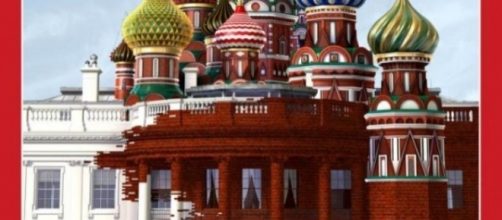Time Magazine’s May 29th cover shows the White House morphing into buildings that channel Russia’s Red Square – a solid pictorial of the suspected collusion between Trump and Moscow. And, while we await the facts to prove it, there is a completely verifiable connection between D.C and the Kremlin that’s plain to see -- the architecture of the two capitals. Bear with me. I need to back up a bit.
Moscow makeover
A very long time ago, in the 15th century, Russia fell for Renaissance architecture and the classical style of Old Rome, which later became the source of inspiration for D.C.
structures. Russia’s love affair with the style began when Ivan III, the Grand Prince of Moscow, big on grandeur and bent on reflecting that in the streets, hired dozens of Italian master builders to remake public places in the image of Imperial Rome. A lot of Kremlin buildings were either directly or indirectly taken from Renaissance star architect Andrea Palladio.
Renaissance in Red Square
Other Italian designers working in Russia include Pietro Antonio Solaris and Marco Ruffo, who designed the Palade of Facets and pretty much most of Kremlin’s walls and towers. You can see the dialogue between the two capitals in their respective use of classical design. Acknowledging this is Moscow Architectural Institute rector Dimitry Shvidkovsky: “At the turn of the 15th and 16th centuries, like most European countries, Russia’s architecture experienced the Renaissance.”
A dome is a dome
Don’t let the onion domes on Kremlin buildings fool you.
They’re just variations on the iconic dome on Old Rome’s Pantheon. D.C.’s Capitol building practically mirrors this. Even Russia’s state-owned department store, GUM, built in 1889, boasts the barrel vault that was so often used in Old Rome’s streets.
But here’s the thing
Given the Eternal City’s influence on Russian architecture, it’s odd that the Kremlin’s favorite son, Fyodor Dostoevsky, hated the way Italy looked during his two stays there. Apparently homesick for his native land, he tagged his visits “insufferable.” You’d think he had rented rooms on some non-descript street. His neighbor was the Pitti Palace, once the residence of the Grand Dukes of the Medici family, rulers of Florence for two centuries when the city was the center of the Italian Renaissance.
Dostoevsky got it wrong
Yet Dostoevsky couldn’t wait to get back home: “I don’t understand Russians who live abroad,” he wrote to a friend. “If here there is the sun and the sky and these absolutely incredible wonders of art, like here in Florence, then in Siberia, in remote places of penal servitude, were other advantages, which are impossible to be found here; most importantly – the Russians and the homeland, without which I cannot live.” His dislike of Italy is hard to reconcile with what Maria Galinka, guide for Moscow’s famed Saint Basil’s Cathedral, has written: “We see the dialogue of the Russian and European cultures in this cathedral; those cultures talk and listen to each other.” Clearly, Dostoevsky wasn’t listening.


